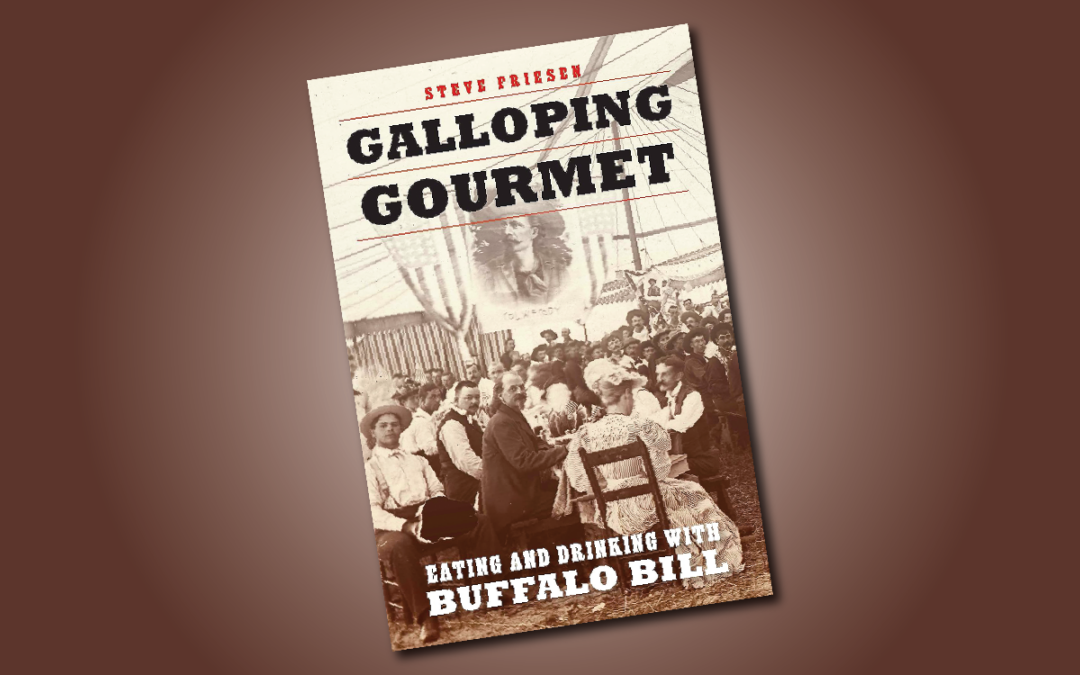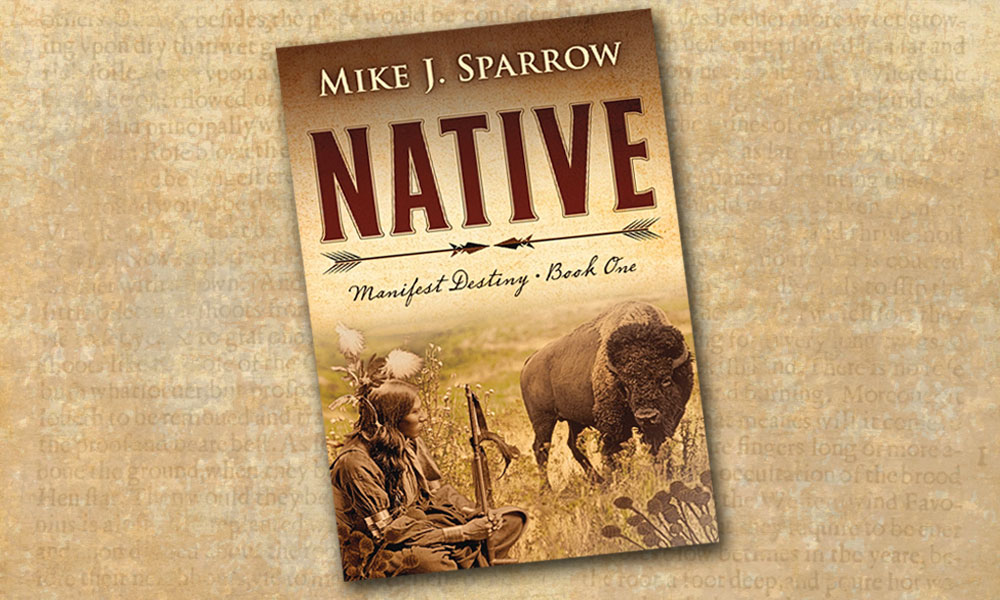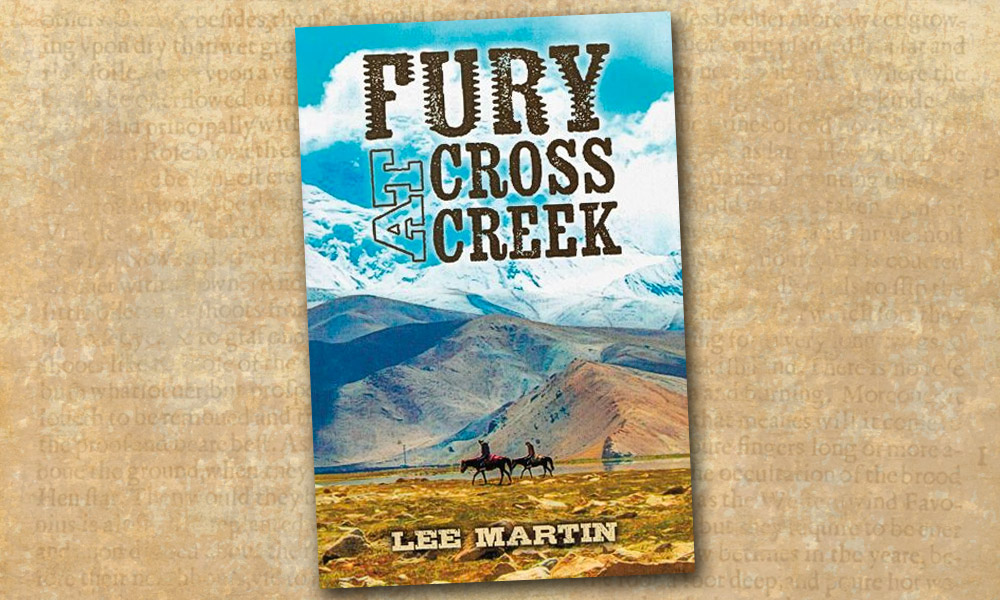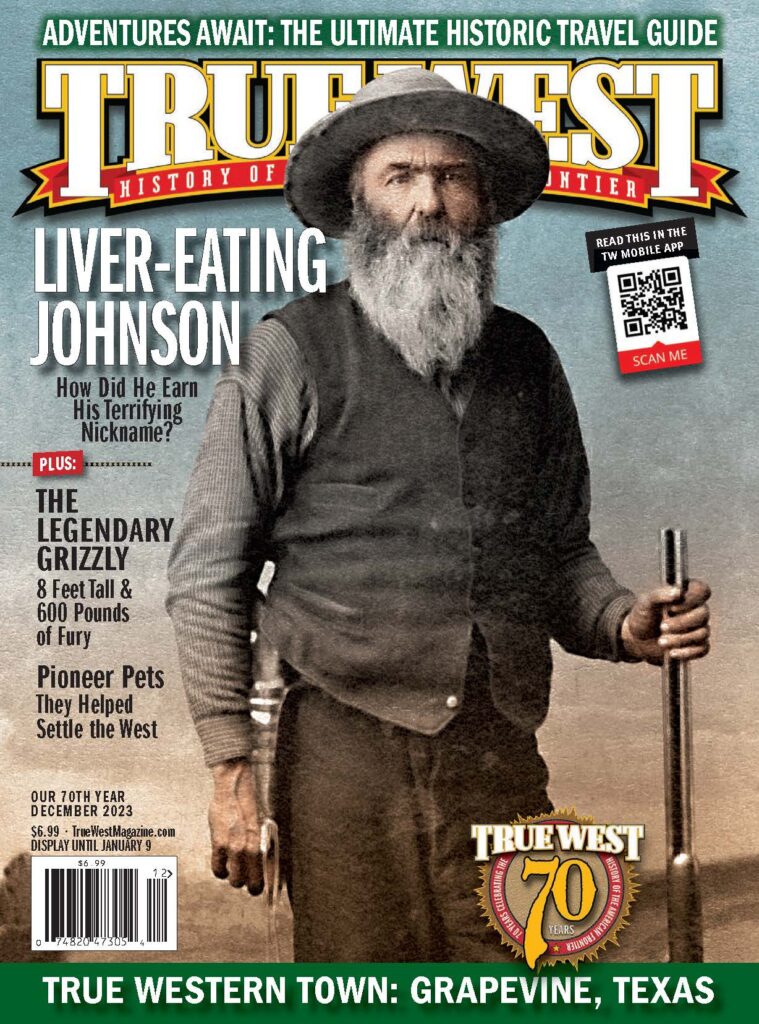A culinary biography of Buffalo Bill, plus a new bio of Newton Earp, a range-war Western, a classic rediscovered and a dramatic debut Old West novel.
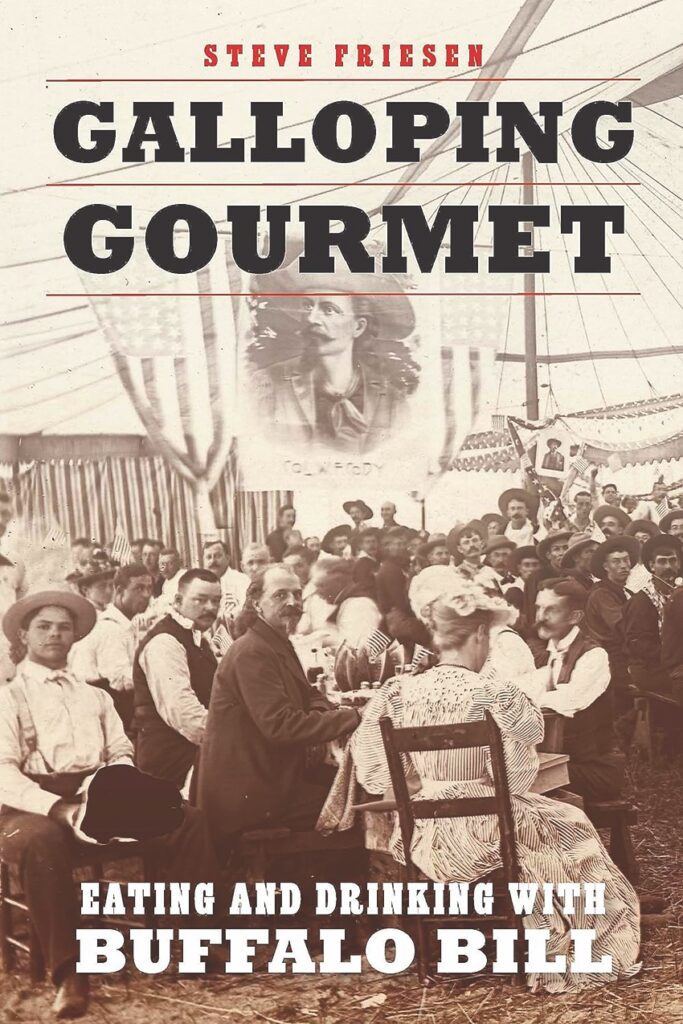
True West’s Collecting the West columnist and William F. Cody historian Steve Friesen has just released his latest book about his favorite Western hero, Galloping Gourmet: Eating and Drinking with Buffalo Bill (Bison Books, $24.95), and without any doubt from this historian, I can guarantee it is one of the most innovative and creative looks at the great showman ever published. And Steve’s years curating and caretaking Cody’s legacy as the curator of the Buffalo Bill Museum and Grave in Golden, Colorado, inspired him to channel his inner-showman and create this one-of-a-kind biography. As the Cody historian notes in his Introduction, “This book is a deep dive into the different roles food and drink played in William Cody’s life. It is my hope that it not only provides a new perspective on Buffalo Bill but also entertains…and makes the reader more than a little hungry.”
But don’t be fooled by the book’s title, Friesen has written a serious history book that provides the reader with an insightful and fresh look at the life and times of America’s greatest Victorian Era Western showman. We also discover that Cody never strayed too far from his frontier roots, even though the Wild West producer, while on the road, never missed an opportunity for a good meal in a fancy, city restaurant. “Dining in the fanciest hotels continued as a theme for the rest of his life, but so would eating in tents,” Friesen says. “And even as the West that he knew disappeared, he would live it on a daily basis.”
Friesen concludes Galloping Gourmet with an Appendix of “Historical Recipes from Buffalo Bill’s Life and Times.” According to the Colorado author, “the recipes, offered with their historical backgrounds, represent foodways of the late 19th and early 20th centuries. Many are typical of those times, even if they might be unusual to 21st-century palates.” I myself will be attempting to make the Cornbread, Buffalo Bill’s Favorite Beef, Pommes Parisienne, Bean Soup (which Bill said “You’ve got to eat…if you live in camp”) and to top it off, Banana Fritters. To drink, I am sure I will try the Old-Fashioned, but also on a hot Arizona day, the Red Lemonade and the Horse’s Neck.
What’s up next for the engaging and creative Colorado historian? I’m not sure, but while I’m enjoying both his prose and inspired historic recipes, I’ll be hoping he’s got another culinary biography in the works.
—Stuart Rosebrook
An Earp Gets His Due
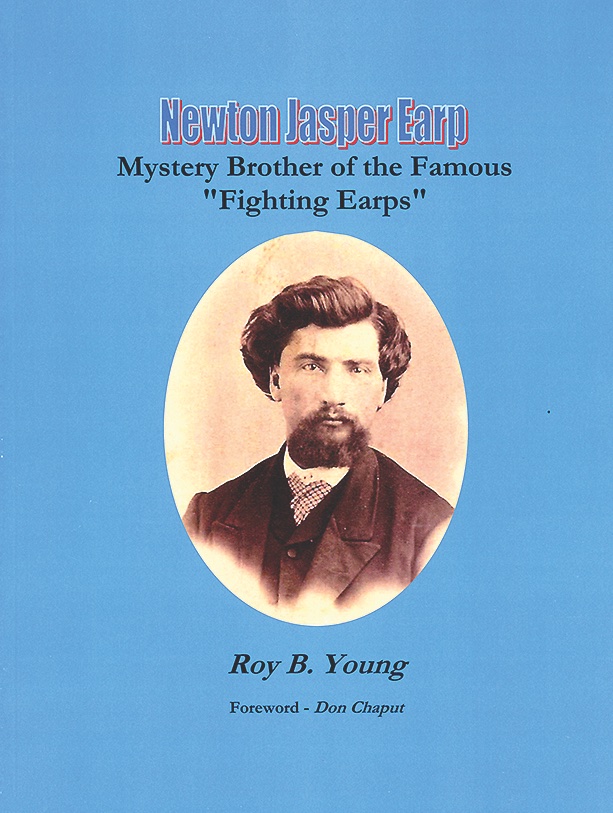
Roy Young’s newest book, Newton Jasper Earp, Mystery Brother of the Famous “Fighting Earps” (Young & Sons Enterprises, $24.95), focuses on the oldest of the Earp boys, Newton Jasper Earp, the half-brother to the infinitely more famous Wyatt and Virgil. This isn’t “fill in a blank” history, but the biography of an impressive man who followed his own proclivities and creed. Newton possessed that Earp “lawman gene,” and served as a law-enforcer longer than them all. The much-respected Don Chaput even noted, “[Newton’s] years as a lawman in Garden City, Kansas, could serve as a textbook for frontier law enforcement.” Additionally, Newton’s Civil War experience was extensive, which included participation in four battles and numerous skirmishes. Thanks to Roy Young, one of the most influential historians regarding the Earps and those historically connected to them, Newton Earp no longer has to be the “mystery brother” to Earpiana historians and aficionados.
—Bradley G. Courtney, author of The Whiskey Row Fire of 1900
Range War
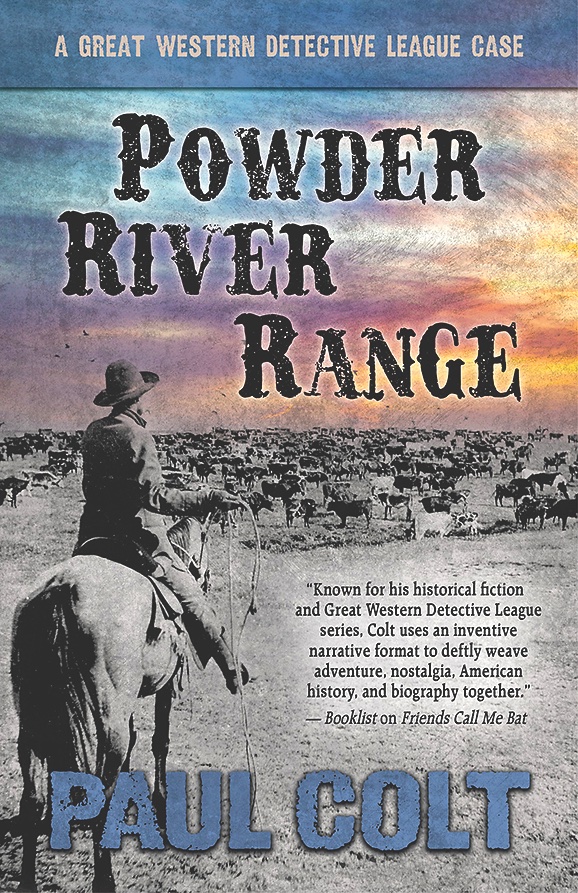
Paul Colt has an interesting way of presenting his story in his latest novel, Powder River Range (Thorndike Press, $26.99). Robert Brentwood is an author who writes the story about Beau Longstreet, a member of the Western Detective League, told to him by Briscoe Cane. Briscoe was with Beau in Johnson County, Wyoming, as they worked to stop the Wyoming Stock Growers Association from running the homesteaders off their land that used to be free range. The book goes back and forth between Robert talking to Briscoe and the story of Longstreet. I found it to be delightful and entertaining to read. I would recommend it.
—Lowell F. Volk, author of the Luke Taylor Trevor Lane series and Milo Ryder U.S. Marshal series
A Classic Rediscovered
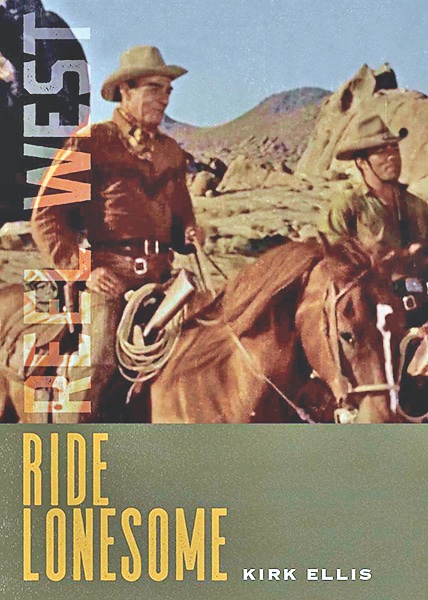
Between 1956 and 1960, star Randolph Scott, writer Burt Kennedy, director Budd Boetticher, and producer Harry Joe Brown co-created a fistful of starkly beautiful, unsentimental second features that were collectively the highpoint of each man’s career. Known as the Ranown films, there is no consensus on the single best film, but no argument over the quality of the group. Kirk Ellis, while examining them all, makes a compelling case for Ride Lonesome (University of New Mexico Press, $19.95). And Ellis knows filmmaking: he was writer/producer on Into the West and John Adams—he won two Emmys for the latter. And he was a friend to both Kennedy and Boetticher; he tried to find financing for Boetticher projects for years. Ignoring the auteur theory, Ellis credits writer over director, and acknowledges the contributions of
the normally ignored producer. It’s about time
—Henry Parke, True West Film and Television Editor
Saddle Up!
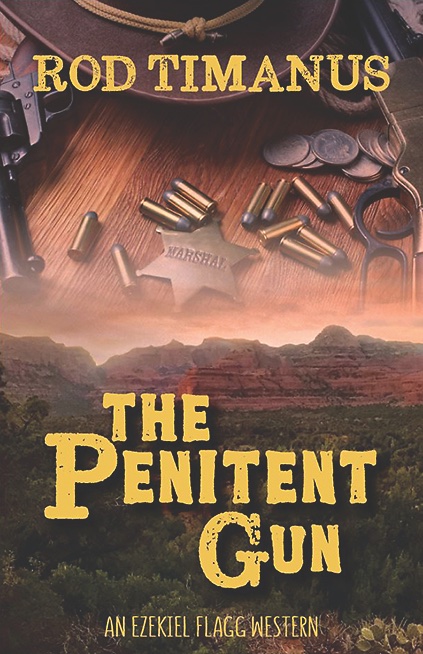
Rod Timanus’s debut novel, The Penitent Gun (Thorndike Press, $29.95), profiles an ex-bounty hunter, ex-soldier, ex-lawman desperately trying to make amends for his violent past. Zeke Smith drifts across Arizona, stopping to help people in need, whether it’s a fence needing mending, or eggs gathered. In Pleasant Grove, which is anything but, he goes to work for Nana, Rebecca and her son, Willie. The Stevens instantly fall in love with Zeke, who teaches young Willie to become “the man” of the family. Zeke uncovers mysterious deaths and the sheriff’s stranglehold on the town. Zeke sets out to right the wrongs. A violent confrontation between Zeke, the residents and the lawmen define the drifter. This is a terrific story, told in detail, slowly unraveling the characters’ lives. The Penitent Gun is the quintessential Western.
—Melody Groves, author of Showdown at Pinos Altos: The Colton Brothers Saga
Rough Drafts
‘Tis the season for giving, and why not give the gift of a Western book?
Here are five books sure to bring a smile to the face of a friend or loved one this holiday season. (Some might also make you hungry or thirsty.)
Corn Dance: Inspired First American Cuisine by Loretta Barrett Oden (University of Oklahoma, $34.95): The Potawotomi chef and food historian’s Corn Dance is beautiful and inspiring—especially if you like to cook!
The 7 Up Ranch Cookbook: The Story of Arizona’s Historic Ranch with Recipes and Photos by Kathy McCraine (Burro Creek Publishing, $35): This very personal history of one of Arizona’s legendary cattle ranches is a true collectible for anyone who loves ranching, cowboys and cooking.
The Last Ride of the Pony Express: My 2,000-mile Horseback Journey into the Old West by Will Grant (Little, Brown and Company, $30): Cowboy-journalist Will Grant likes to immerse himself in the subject he is writing about, so he decided to ride the whole length of the historic Pony Express Trail. His writing is infectious and inspiring.
The Forsaken and the Dead: The Bass Reeves Trilogy, Book Three by Sidney Thompson (Bison Books, $19.95): Thompson’s final entry in his fictional trilogy of the legendary lawman in Oklahoma Territory and Arkansas is timed perfectly with the debut of Taylor Sheridan’s new Paramount+ series, Lawmen: Bass Reeves.
Heaven’s Harsh Tableland: A New History of the Llano Estacado by Paul H. Carlson (Texas A&M University Press, $42): If you loved Larry McMurtry’s Lonesome Dove, then you need to read Carlson’s history of the legendary Llano Estacado.
—Stuart Rosebrook
Arizona Rancher Shares Her Favorites
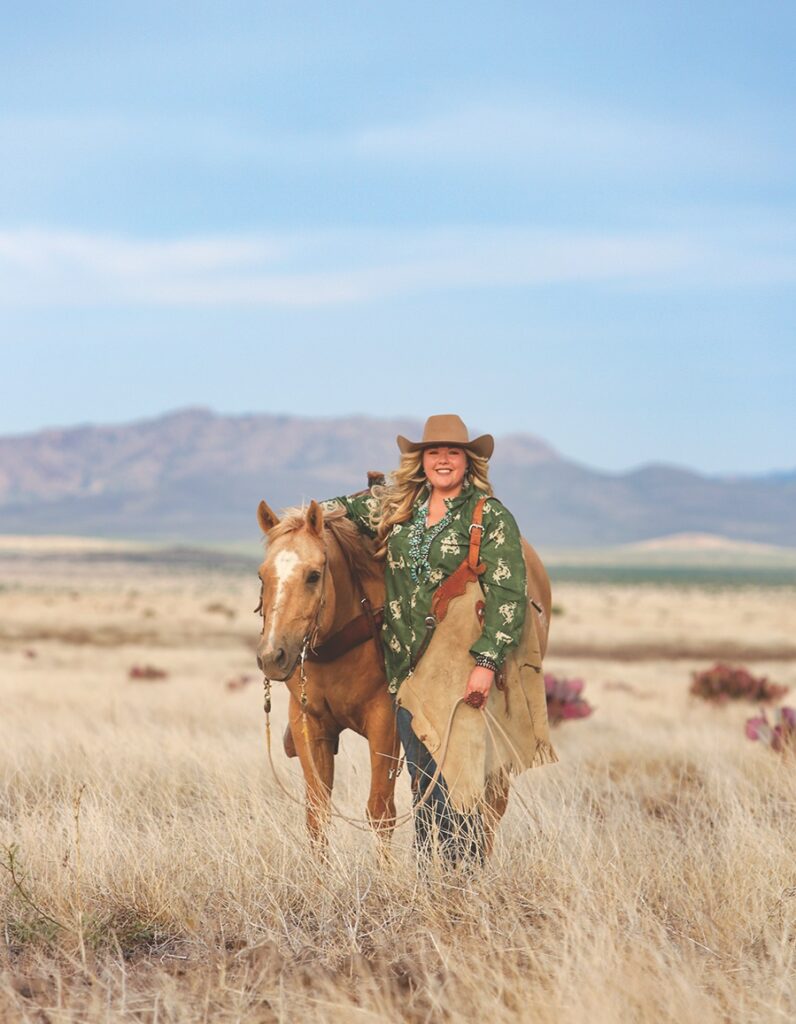
Mackenzie Kimbro is a sixth-generation cattle rancher continuing her family’s legacy, while authoring a coffee table cookbook, Roots Run Deep, Our Ranching Tradition, which shares stories, recipes and colorful photos, offering a glimpse into her family’s livelihood. She also is a social media influencer/content creator specializing in Western fashion and lifestyle and works in television as a producer, director, host and media personality, including her own live on-stage talk show, which has run for five years during the National Finals Rodeo events and expanded to be included in the Cowboy Channel programming for December 2023. You can follow all her adventures on social media. Here are her favorite Western books:
A Hundred Years of Horse Tracks, The Story of the Gray Ranch by George Hilliard (High Lonesome Books): Hilliard’s chronicle of the famous ranch in New Mexico’s boot heel is a must-read for Western history enthusiasts.
Cowboy Island, Farewell to a Ranching Legacy by Gretel Ehrlich, edited by Nita Vail (Santa Cruz Island Foundation): This is a look at the importance of ranching legacies and the realities of what monumental loss is felt when they are lost.
Watt Matthews of Lambshead photographs and text by Laura Wilson
(The Texas State Historical Association): This is a touching tribute to a man and his legacy in ranching.
Cowgirls, Commemorating the Women of the West photography by David Stoecklein (Stoecklein Publishing, LLC): This tribute to cowgirls across the West includes ranching, riding, roping and setting the bar in all aspects of Western cowgirl life.
Ranching West of the 100th Meridian: Culture, Ecology & Economics edited by Richard L. Knight, Wendell Gilgert and Ed Marston (Island Press): This book combines a collection of writings from ranchers, conservationists, poets, ranching advocates and public land advocates, all expressing the importance of responsible land stewardship. Contributors include Paul Starrs, Linda Hasselstrom, Bob Budd, Drummond Hadley, Mark Brunson, Wayne Elmore, Allan Savory, Luther Propst and Bill Weeks.
Editor’s Note: Want to follow Mackenzie on social media? Check her out on: Instagram: @kenziegk; Facebook: “Roots Run Deep, Mackenzie Kimbro”; and online to order her book and watch previous seasons of Roots Run Deep: rootsrundeepaz.com.

